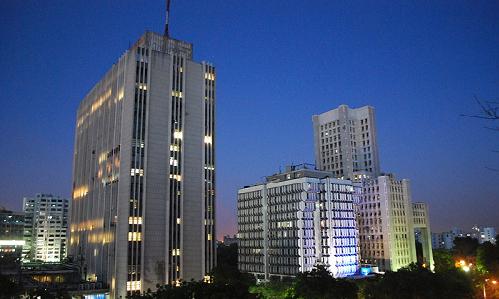Is Delhi sitting duck for a major earthquake in the near future? Some media reports indicated to the possibility, creating a sense of panic among people. Being on seismic zone IV, Delhi is vulnerable, said Dr. Kalachand Sain, Director of Wadia Institute of Himalayan Geology.
Dehradun (ISJ) – There have been some reports that a ‘major’ earthquake could hit India’s national capital in the near future, after a series of minor events in the months of April-May this year in a radius of about 100 kilometres. The news ‘major earthquake’ created a sense of panic among people, with several foreign nationals getting on to earthquake safety protocols ahead of such a perceived calamity.
The reports quoted Dr. Kalachand Sain, Director of Wadia Institute of Himalayan Geology, an autonomous research institute for the study of Geology of the Himalayas under the federal Department of Science and Technology as saying that a “major earthquake could hit Delhi.
” Indian Science Journal talked to Dr. Sain to corroborate the facts and to find out if the national capital is indeed sitting duck for an earthquake of higher intensity. “
Delhi and NCR region has been identified as an earthquake zone, it is vulnerable and continuously there have been some smaller earthquakes of less than 3.0 to 4.6 magnitudes in the recent days,” said Dr. Kalachand Sain.
“Eleven earthquakes of magnitudes less than 3.0 to 4.6 magnitudes have taken place in two months’ period. Looking at the past magnitude-history of earthquakes in and around Delhi-NCR, we cannot rule out the possibility of an earthquake bigger than 4.6 in future,” explained Dr. Sain giving scientific validation of the event.
There were several earthquakes of significant impact in the Delhi and surrounding region – in 1956 with a magnitude of 6.7, 1960 with a magnitude of 6.0 and 1966 of 5.8 magnitude. Still beyond, there was an earthquake of magnitude 6.5 in 1720.
Why Delhi region is experiencing earthquakes?
All the earthquakes in Delhi-NCR are due to the release of strain energy, which have been accumulated as a result of northward movement of Indian plate and its collision with the Eurasian plate, through the fault or weak zones. There are so many weak zones and faults in the Delhi-NCR: Delhi-Haridwar ridge, Mahendragarh-Dehradun subsurface fault, Moradabad fault, Sohna fault, Great boundary fault, Delhi-Sargodha ridge, Yamuna river lineament etc.
The Himalayan seismic belt, where the Indian plate collided and has been subducting beneath the Eurasian plate, accumulates strain energy at the plate boundary due to relative movement of plates against each other causing crustal shortening and deformation of rocks. This energy can be released through the weak zones and faults in the form of earthquakes of various magnitudes
Wadia Institute of Himalayan Geology is studying how much strain energy was built up in the grid area of 150 x 150 square kilometres around Delhi-NCR, and how much strain energy has been released during the recent earthquakes.
“Once we study this, we will know how much energy has been released and how much is still remaining,” said Dr. Sain. He however, said, scientifically, there is no technique or method anywhere in the world that can predict an earthquake or forecast simultaneously the location, time and magnitude (energy).
“Once we study this, we will know how much energy has been released and how much is still remaining,” said Dr. Sain. He however, said, scientifically, there is no technique or method anywhere in the world that can predict an earthquake or forecast simultaneously the location, time and magnitude (energy).
In the recent past, India experienced several strong to major earthquakes – 2001 Kutch (7.7), 1997 Jabalpur (5.8), 1993 Latur (6.2) earthquakes. Hence, we cannot rule out for a moderate to strong magnitude earthquake in the Delhi-NCR.


